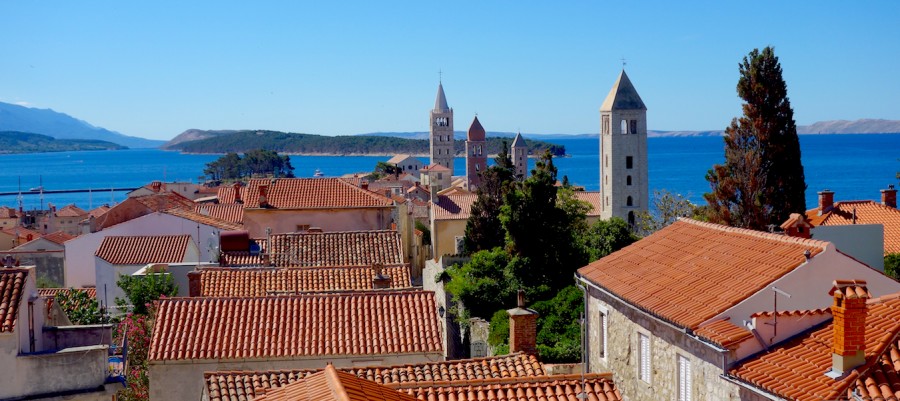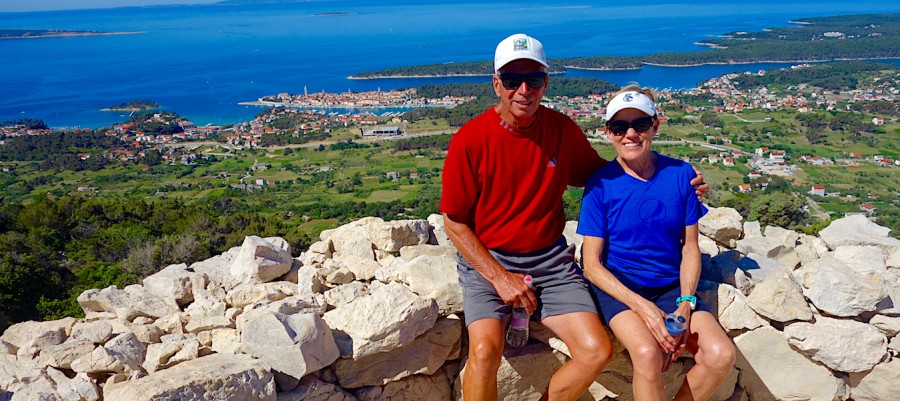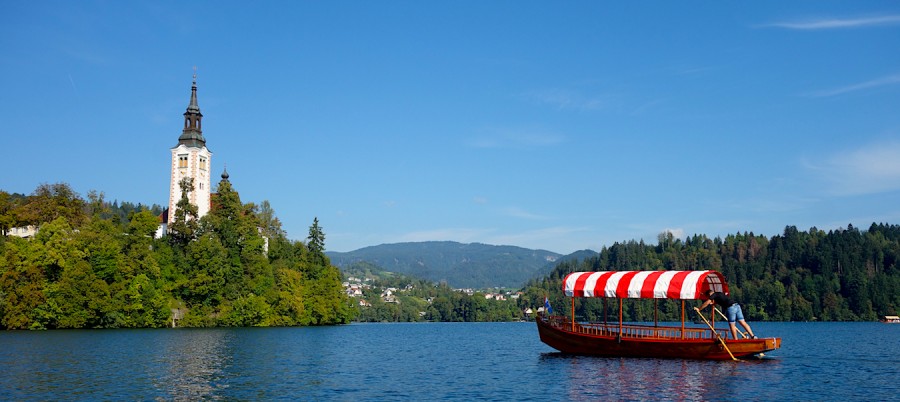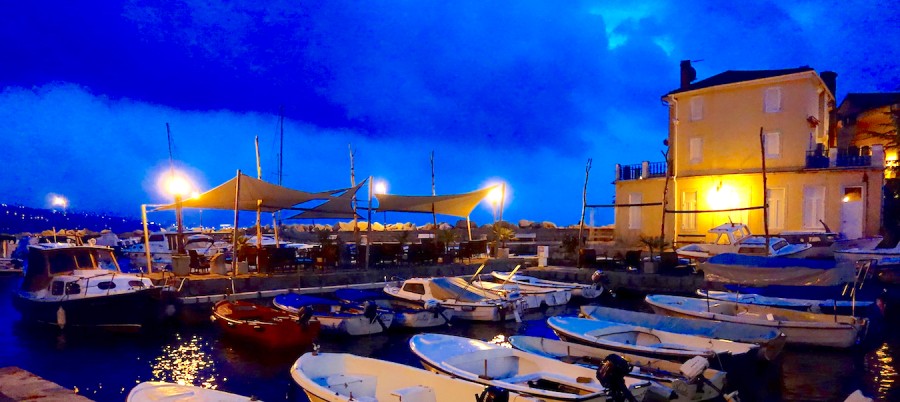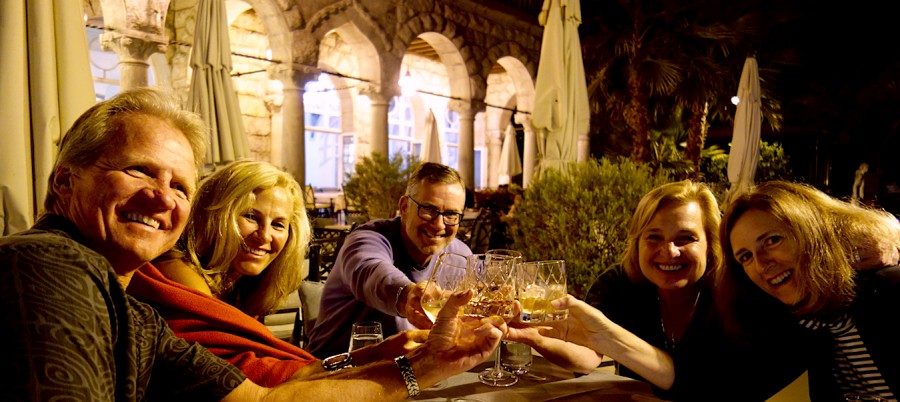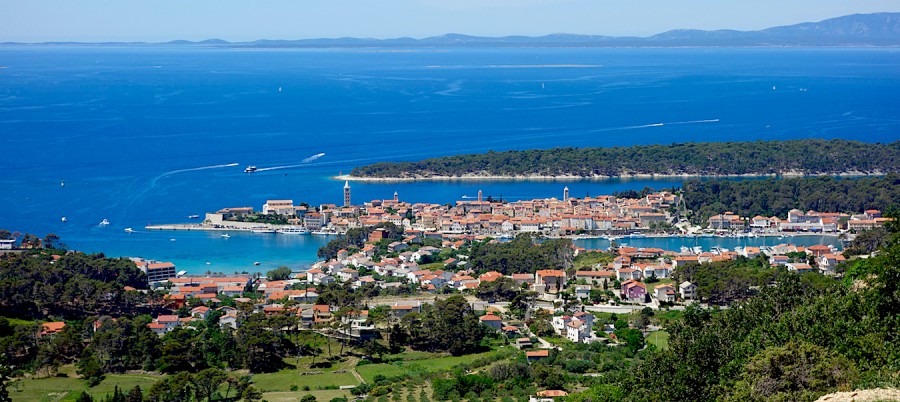Next Step’s Slovenia & Northern Croatia Walking Tour
In our explorations of Slovenia and Croatia, we are constantly in awe of the variety of landscapes and cultural influences that are concentrated in such a small geographical area.
Medieval castles loom above pristine alpine lakes, rustic and prosperous farming villages thrive in the fertile soils of the Istrian Peninsula, elegant Belle Epoque villas line the waters of the Kvarner coast, and Venetian cities rest elegantly in the sun on the islands of Dalmatia. Perhaps more than any other walking adventure, each day brings forth new surprises and secrets.
This trip is designed to allow for easy add-on visits to Ljubljana, Zagreb and destinations further south in Croatia.
What’s Included?
Next Step Walking Tours are all-inclusive. Everything but your transportation to the initial meeting place is included. All accommodations, meals including fine wines, admission fees, tips and transfers are included. From the time you check in to the time of your departure, the only money you may need is for personal shopping or spa treatments.
Day By Day
Day 1 | Our journey begins on serene Lake Bled at the foot of the Julian Alps just 35 minutes north of the Ljubljana International Airport. Lake Bled is one of the most beautiful in Europe, with its lovely island church, striking castle and the towering Mount Triglav—all of which are perfectly framed by the wisteria on your balcony. If you arrive early, you may choose to walk around the lake, take out one of the hotel’s private boats, or simply sit back and enjoy the view. We will meet at 6:30 on the hotel terrace for an aperitif and delicious welcome dinner. |
Day 2 | On our very first walk, the incredible variety of the Slovenian landscape becomes evident. We begin in the deep, swirling Vintgar Gorge. Dramatic wooden bridges constructed along the rock walls make it possible for us to easily follow the tortuous path of this emerald stream. Even on bright summer days, the air here is chilled with shade and mist. Exiting the lower part of the gorge, we find ourselves in the dense forests of the lower Julian Alps. From here, the trail rises and breaks free of the woods to reveal a splendid panorama of the villages surrounding Bled. We traverse the meadows above these villages, each dotted with churches that suggest Austria. However, dozens of the classic “kozolec,” or hayracks, place us firmly in Slovenia. For lunch, we visit a local inn where chicken and pork are slow roasted over an open flame. Afterward, our panoramic walk continues with the Bled Castle constantly in view. We will visit the castle later this afternoon and then enjoy a stroll down to water’s edge and back to the hotel. This evening, we experience a dinner as complex as lunch was simple: Our friend—and Slovenia’s new top chef—prepares a tasting menu for us at his intimate restaurant. |
Day 3 | We step today not out of the front door, but from the hotel’s private dock onto a traditional “Plentna” boat. These flat bottomed boats date back to the 1500s and since 1850, only 14 families have the license to operate them. One of the beauties of Lake Bled is that no motor craft are allowed, so we glide silently across the surface to Bled Island and the Church of the Assumption at the top of 98 wide, granite steps. After our visit here, our boatman drops us in Milno or “milltown,” a small village clustered around the stream that exits the lake and makes its way toward the sea. This is the direction we follow as well, down through green fields and the villages of Selo and Ribno to the Bohinjka river and the hilltown of Radovljice. In medieval times, Radovljice was much more important than Bled. Today, it has a perfectly restored town center with a spectacular view of our morning’s walk and the Julian Alps in the background. The town holds local traditions dear and has charming gingerbread and honey production museums. Our hosts for lunch serve up the specialties of the valley with flair at a 16th-century inn. After lunch, we follow the river farther, all the way to the Adriatic Sea and the resort town of Opatija! In the late 19th century, Opatija was the most elegant seaside resort of the Austrian Empire, and the Villa Hasslinger was one of its most spectacular properties. Today, it is a meticulously restored Belle Époque gem. It is situated in the heart of town beside one of Croatia’s most lovely parks. You may choose to explore the stylish streets of Opatija, take a dip in the pool, or enjoy a massage before dinner on the terrace. |
Day 4 | The Istrian Peninsula is the part of Croatia that lies closest to Italy, and the cultural influences here are unmistakable. The sleepy villages of the Istrian interior bring to mind the undiscovered Tuscany of decades ago. A brief van ride whisks us away from the coast and directly to its geographical heart. Forests of chestnut, olive groves, and small vineyards dot the landscape. Our walk this morning wanders from village to village, some inhabited by just a few families. Perhaps the most enchanting of all is the hamlet of Hum. With a year round population of just 17, Hum bills itself as “the smallest town in the world,” but the village square, with it’s 12th -century Romanesque church, is surprisingly sophisticated. At a local taverna, we will enjoy a lunch of hearty Istrian specialties such as handmade fuzi pasta, served on a shady terrace overlooking the valley below. This afternoon, our walk takes us down the unusual Glagolitic path. Along the way, a series of 11 outdoor sculptures commemorate Istria’s importance in the development of Glagolitic, the oldest known Slavic alphabet. This evening, we stroll along the water’s edge to the lovely harbor of Volosko, which has come to be known as a harbor for “foodies” as well. The sommelier at Volosko’s most beloved restaurant is one of Croatia’s best-known wine columnists, so we are sure to enjoy a special bottle of Istria’s best! |
Day 5 | The stretch of coastline extending west from Opatija enjoys an element that we have not seen in any other prized beach destination: a 12-kilometer pathway linking the area’s villages. The Lungomare winds in and out of rocky inlets, passes beneath Art Nouveau villas and highlights town parks. It was brilliantly designed to remain away from the main road and firmly at water’s edge to offer walkers a peaceful and lush passage between towns. The islands of Krk and Cres scroll out across the horizon. Our destination this morning is Lovran. Lovran has something no other town along the Riviera has: a walled, medieval town center. Its crooked, narrow alleyways are great fun to explore. Here you’ll discover tiny chapels, private gardens, quirky facades, and a surprisingly innovative restaurant nestled into a small piazza barely 20 foot square. After a delicious and leisurely lunch, our private van awaits just a few paces away for our journey to Rab Island. Our course passes directly alongside Krk and Cress, giving us our first impressions of the island life to come. When the current Croatian president wants to spend time on the islands, he chooses Rab. He stays at the Hotel Arbiana, and he dines by candlelight in the garden at Arbiana’s slow-food restaurant. We see no reason not to follow his lead! |
Day 6 | Rab Island is simply the best-kept secret of the Dalmatian Coast. That may be because technically it belongs to the Kvarner Islands. The first Dalmatian Island is Pag, just two kilometers away. Still, Rab exhibits all the characteristics of the most popular islands to the south (Hvar and Korcula) without any of the mass tourism that overwhelms them. Rab has a fascinating dual personality. Half of the island is lush and green, while the other half is as bare as the moon. Today, we’re off for an exploration of the green side. From our hotel garden, we step into the heart of the old town. We stroll past the four churches whose towers give Rab Town its distinctive skyline and enter the town park. This is where people slip away in the morning to read the paper or chat in peace. Passing through the park, we drop down into the Bay of Euphemia, named after the Franciscan Monastery at the bay’s mouth. At the monastery, the island goes silent. For the rest of the morning, our path wanders through shady woods, popping out occasionally at the sea for glimpses of Rab Town and the mainland far in the distance. After lunch in a secluded bay, we are met by private boat for a scenic sail back to the harbor in Rab Town. So far, we have not had the opportunity to explore Rab Town proper, so we take this opportunity to get you acquainted with its unique shops and artisan markets. All this day needs is a wine tasting at the town enoteca and a traditional island meal of peka (slowly roasted lamb) to bring it to a perfect close. |
Day 7 | The national colors of Greece are white and blue, and among the hills of eastern Rab it feels as if a Greek flag should be waving proudly. This is an arid and austere landscape of white volcanic rock and the deep blue of the Adriatic Sea. Its simplicity is exhilarating, and a stark contrast to our previous experiences on the island. Our walk this morning leads up a densely wooded path and through a tight gorge before popping out on the white plateau at the island’s summit. Our view extends over a dozen islands and the Velebit massif on the mainland. It is customary for visitors to construct a small rock sculpture to mark their passing on the plateau. You may choose to try your hand at this or simply admire the acres of other sculptures silhouetted by the sea. Nearby, a lattice of high, stonewalls form the pens where the island’s sheep are raised. We’ll enjoy a stop at an isolated and rustic café where they produce their own Rab Island pecorino before descending on a gentle country road back to town. The colorful umbrellas of the harbor call out to us for a late lunch. Afterward we catch the ferry to the mainland and hop in our private van for the 2 1/2 hour journey to the Croatian capitol of Zagreb. This evening, we enjoy a final celebratory meal together at the hotel’s renowned restaurant, Zinfandel. |
Day 8 | We strongly recommend that you add an additional day to your trip here. Zagreb is an overlooked European capitol. It is vibrant, full of interesting museums and neighborhoods, and free from tourist crowds. From Zagreb, you also have easy connections by rail or plane to Ljubljana, Dubrovnik and other European cities. Whatever your travel plans, we will go over them with you and make sure that your continuing journey is as easy and effortless as possible. |
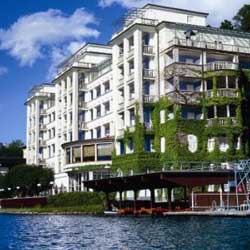 Grand Hotel Toplice
Grand Hotel Toplice
The Toplice is the most elegant address on Lake Bled and sits directly atop the curative mineral springs that made Bled famous in the 1800s. It’s lobby and balconies all share extraordinary views of the lake, castle, church and island. Relax on your balcony or at the spa, or feel free to head out on the lake in one of the hotel’s private boats.
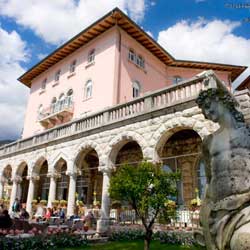 Hotel Milenij
Hotel Milenij
In the late 19th century, Opatija was the most elegant seaside resort of the Austrian Empire and the Villa Hasslinger was one of its most spectacular properties. Today, it has been meticulously restored and renamed the Milenij (Millennium). It is situated in the heart of Opatija next to one of Croatia’s most lovely parks.
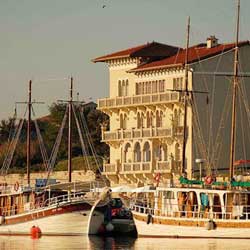 Hotel Arbiana
Hotel Arbiana
When the current Croatian president visits the islands, he chooses Rab Island. He stays at the Hotel Arbiana, and he dines by candlelight in the garden at Arbiana’s restaurant. We see no reason not to follow his lead!
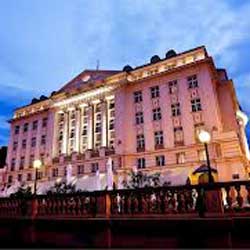 Hotel Esplanade Zagreb
Hotel Esplanade Zagreb
The Hotel Esplanade was built in 1925 to accommodate visitors passing through on the luxurious Orient Express. To this day, its sumptuous rooms, acclaimed restaurant and perfect location make it the first choice of discerning travelers. Previous guests include Josephine Baker, Louis Armstrong, Catherine Deneuve and Woody Allen. Let’s join them.
“If you go to a place on anything but your own feet, you are taken there too fast, and miss a thousand delicate joys that were waiting for you by the wayside.”
~ Elizabeth von Arnim
Custom Tours
All of our walking tours can be customized to your needs or designed to fit your personal departure dates. Learn more about our custom tours.
Newsletter
Sign up for our newsletter to stay updated on our latest European walking tours.

